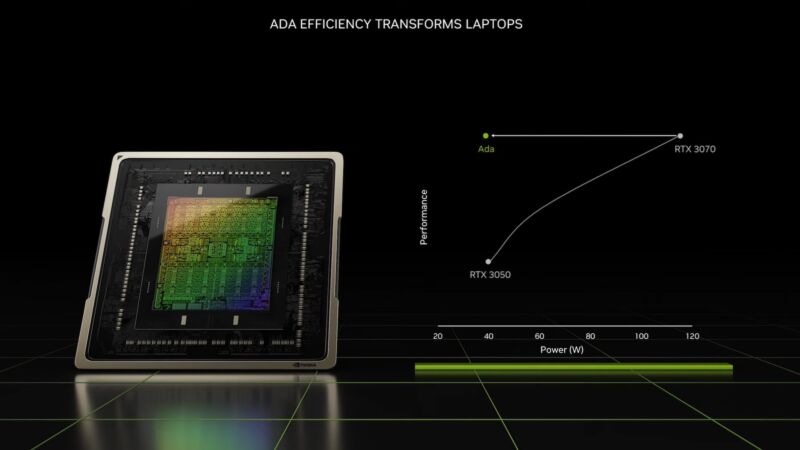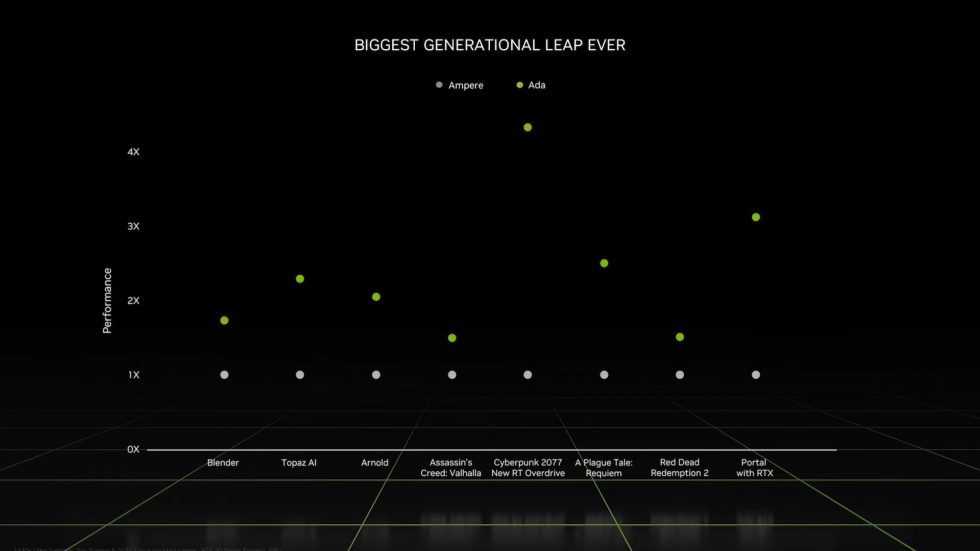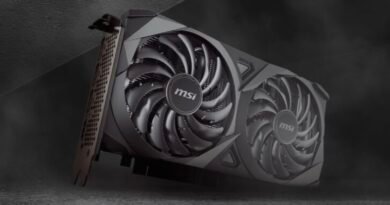Nvidia unveils a broad range of efficient new laptop GPUs, from RTX 4050 to 4090
[ad_1]

Nvidia
In addition to un-unlaunching the RTX 4070 Ti GPU for desktops at CES today, Nvidia announced a new range of RTX 4000-series laptop GPUs. Nvidia claims the new GPUs will provide big performance and power efficiency boosts, particularly for the lower-end GPUs that ship in the gaming laptops that most people buy.
The RTX 4000-series laptop GPUs use the same Ada Lovelace architecture as the desktop parts and will come with the same architectural benefits: DLSS 3 support, hardware-accelerated AV1 video encoding, and a more efficient manufacturing process that Nvidia is leaning on to improve power efficiency. (Nvidia didn’t specify in its presentation, but presumably it’s the same customized 5 nm TSMC process used for the desktop Lovelace cards.)
-
Limited pricing and availability data for the mainstream RTX 4050, 4060, and 4070 GPUs.
Nvidia -
The high-end 4080 and 4090 series are coming a little sooner.
-
RTX 4000 will also bring some new power-saving features to shelter under Nvidia’s “Max-Q” umbrella, though as in the last generation, there will be no specific “Max-Q” branded GPUs.
Nvidia
We don’t have precise specs for any of the GPUs, and most of Nvidia’s performance comparisons were pretty abstract. We know there will be 4050-, 4060-, 4070-, 4080-, and (for the first time in laptops) 4090-class GPUs. We also assume that manufacturers can set specific power targets for each GPU, providing better performance in designs that can handle it while tuning for power efficiency in thinner and lighter laptops. We know that each GPU will continue to use “ultra-low voltage” GDDR6 memory rather than GDDR6X, the same as the previous-generation RTX 3000-series laptop GPUs.
We also know that an unnamed Lovelace GPU (presumably the 4090) can beat an unnamed Ampere GPU (presumably the RTX 3080 Ti) in all games by various amounts. These abstract performance comparisons are made more difficult because Nvidia-provided performance charts normally also turn on DLSS and other features, making it more difficult to determine how the GPUs stack up relative to each other in games and apps that don’t support those features.

Nvidia
But the most concrete chart compared an unnamed Lovelace GPU to the RTX 3050 and RTX 3070, showing that the Lovelace GPU (almost certainly the RTX 4050) could perform at the same level as the RTX 3070 while consuming just 40 W instead of 120 W. RTX 3050 GPUs have been popular in thin-and-light designs like the Dell XPS 15 and Surface Laptop Studio, and bringing RTX 3070-level performance to those laptops without requiring RTX 3070-level heat, fan noise, or cooling capacity is a big deal.
Nvidia only releases a new range of mobile GPUs every other year or so, meaning that the RTX 4000 series will likely be the chips powering gaming laptops and mobile workstations from this year until sometime in 2025. RTX 4000-series laptop GPUs will be available starting on February 8 (for the 4080 and 4090) and February 22 (for the other GPUs), though it will presumably take them much longer to fully replace the entrenched 3000-series in most laptops. Pricing will vary, but they will “start at $999.”
[ad_2]
Source link




